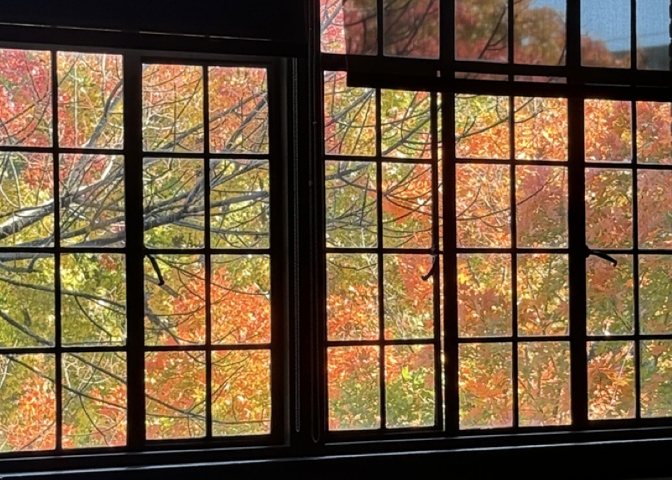Tchaikovsky once said “I love Mozart as the musical Christ. I do not think this comparison is blasphemous. Mozart was as pure as an angel, and his music is full of divine beauty…the culminating point of all beauty is in the sphere of music.” Tchaikovsky wasn’t wrong. The sheer harmonious perfection and technical genius of Mozart’s work remains central to our notion of a musical Eden. He is perhaps the most famous composer in the world. So familiar that some performers have gone out of their way to defamiliarize him as they begrudgingly prepare for another performance of “Eine Kleine Nachtmusik.” And why shouldn’t they? Almost 270 years after his birth, why does Mozart remain extraordinary? Looking past the sentimental adoration and cult-like following that classical music snobs scowl at, Mozart is our foundation and inspiration. When celebrating his work, we celebrate ourselves, and the best humanity has to offer.
Throughout his illustrious career, Mozart masterfully composed in every musical format. Operas, choral works, concertos, symphonies, chamber music, solos and sonatas all by the time he was 35. Although, one piece in particular represents the height of the composer’s maturity and undoubtedly stands as a great monument to human creativity. This piece would be his infamous Requiem in D minor. The Requiem has five main sections within its eight movements: Introitus, Sequentia, Offertorium, Sanctus, Agnus Dei and Communio. The Requiem begins with a soaring seven-measure instrumental introduction in the Introitus. The woodwinds present the principal theme of the work which is revisited throughout the remainder of the piece in variations. The trombones announce the entry of the choir, breaking into the main choral theme leading into the Kyrie. The Kyrie masterfully incorporates polyphonic writing inspired by Mozart’s much admired baroque predecessors. With the end of the Kyrie comes a slower tempo lifting the movement into the mighty cries of the damned in the multi-sectioned Sequentia. This movement is filled with vivid and often horrifying imagery. Mozart writes breathlessly summoning trumpets and drums that imitate God pounding his fist as he pronounces judgment. Yet the sweet lamentful harmonies of the Offertorium renew our confidence that our prayers and sacrifices may indeed be enough to receive a pardon. The Sanctus brings home the Requiem’s divine glory through it’s lofty homophonic textures. After the ominous charisma of the Agnus Dei, we return tenderly to the main themes of the Introitus in the Communio.
The story surrounding the composition of this piece is shrouded in mystery and chronicles the deterioration of a historical icon. We’re in 1791, and Mozart has been considerably ill for over a year. Problems have been piling up for Mozart in recent years. In the late 1780’s, his Don Giovanni was considered a triumph, but the times had changed in Vienna, and not in the composers favor. Following the French Revolution, tensions were escalating throughout Europe, and Austria was preparing itself for war with Turkey. Culture was the first to suffer the consequences of a new political climate. The number of concerts were cut in half and Mozart who was already known to fritter away money from an extravagant lifestyle, was consumed by financial debt.
While working on “The Magic Flute,” Mozart received a shady commission from a stranger at his door to compose a Requiem under conditions of secrecy. One of these conditions was that Mozart must not attempt to uncover the identity of the person making the request. Little did he know the commissioner was Count Franz von Waslsegg. Waslsegg was a fan of trickery who often commissioned works by composers to then pass of as his own at private concerts and salons. To honor the memory of his wife, and show himself as a brilliant composer, he made Mozart his next mark. Intrigued by the rules surrounding the commission and financial incentive, Mozart obsessively threw himself into the piece and worked on nothing else for several months. However, throughout this time, his health was in decline and would ultimately prevent him from finishing what he started. Mozart wasn’t sound of mind when he received the commission, which led him to believe he’d been cursed to write the piece as a swan song and would shortly die after.
When Mozart passed on December 5th, 1791, he had only succeeded in completing the Requiem through the Kyrie in full. He left basic sketches covering the voice parts and bass lines to be performed during the Dies Irae to the Hostias, but the piece was nowhere near completed. This left his wife Constanze to inherit a myriad of issues. Struggling to make ends meet as it was, she desperately needed to collect the final payment. Out of these circumstances, Constanze devised a plan to deliver a finished work and claim Mozart had completed it before he died. She then would be able to collect the outstanding payment. To set the plan in motion, she secretly recruited the composers Joseph von Eybler and Franz Xaver Süssmayr to finish the piece. Eybler orchestrated the music following the Kyrie but was unable to finish and returned the Requiem to Constanze. Luckily, Mozart’s pupils held a lot of knowledge about how their teacher originally intended to finish the piece. This allowed Süssmayr to start where Eybler finished and he added his own orchestration to the Sanctus, Benedictus and Agnus Dei while completing the Lacrymosa. Süssmayr rewrote the entire Requiem in his own handwriting in order to make it more difficult to tell that it had been pieced together by various composers. He delivered the piece himself to the messenger who requested it. Then to top it all off, he forged Mozart’s signature with the date of 1791.
The presence of the incomplete Requiem has fascinated and delighted scholars, commentators, playwrights, novelists and artists to the present day. The Requiem along with Mozart’s death has resulted in an aura of legend and dramatization which has produced works like Alexander Pushkin’s Mozart and Salieri and Milos Forman’ s Amadeus. While these artists have taken creative liberties to embroider their stories, the level of intrigue and mystery is highly authentic. These last few years of Mozart’s career have long caused puzzlement. Less prolific then before, he seemed to have been gravitating towards a more experimental style. Nevertheless, what Mozart might have done next is impossible to guess. The pieces that emerged from a suddenly productive year in 1791–“The Magic Flute,” “La Clemenza di Tito” and the Requiem–all form diverging paths. Mozart was still a young man, not yet at the height of his powers. In an unimaginable alternate universe in which he lived to an older age, scholarly articles might have read sentences such as: “We tend to focus on the great works of Mozart’s maturity. Yet we should not overlook the lively works of his youth such as ‘Don Giovanni.’” As we unfortunately don’t have this luxury, this last year of his life is the closest connection to the composers final musings and showcases a full character that is fascinatingly vast and complex.
When asked about Mozart’s Requiem, middle/upper School music teacher Russel Currie shared some insight. “Tragedy and loss are associated with Mozart’s Requiem” Currie said. “Like the untimely deaths of rock stars at an early age, Mozart’s death has been romanticized in literature and on film. Milos’s Forman’s extraordinary film Amadeus ends with Mozart on his deathbed and his fictional nemesis the composer Antonio Salieri (who in reality would have been his student Sussmayr) feverishly copying the Requiem that Mozart is dictating to him. A rumor at the time was that Sallieri poisoned Mozart. While there is no evidence of this, Salieri spent the rest of his life denying the rumors eventually suffering a nervous breakdown — continuing the agony associated with the piece. While the Requiem was never completed by Mozart, it remains a time tested masterpiece. His completed sections, fragments and ideas are reminiscent of ancient Greek mosaics where miscellaneous shards are assembled encouraging our imagination to create the complete picture.”
His music portrays the highs and lows of life experience in their entirety, yet it’s hard to top the emotional depth and intricacy of the Requiem. Before the composition of his Requiem, Mozart wrote to his father Leopold “As death is the true goal of our existence, I have formed during the last few years such close relationships with this best and truest friend of mankind that death’s image is not only no longer terrifying to me, but is indeed very soothing and consoling.” This sense of calm and acceptance towards death can be felt throughout the Requiem. The piece swings between accents of anguish and soft melodies, ultimately balancing a gravely solemn and melancholic tone with a soothing transcendence. For me, the opening Introitus of the piece represents this dichotomy masterfully. The opening plaintive melody soars into a harrowingly beautiful chorus that puts us face to face with our creator. Such an exquisite piece of music is only fitting as the consummation of an imposing and immortal man’s career like Mozart’s.
References:
Boccara, Alice. “Everything You Always Wanted to Know about… Mozart’s Requiem.” France Musique, 22 Jan. 2020, www.francemusique.fr/en/everything-you-always-wanted-know-about-mozart-s-requiem-15670.
“The History of Mozart’s Requiem.” Concert Vienna, concert-vienna.com/blogs/viennese-things/the-history-of-mozart-s-requiem.
Magazine, BBC Music. “The Mystery of Mozart’s Requiem.” Classical Music, 10 Oct. 2020, www.classical-music.com/features/works/story-behind-mozarts-requiem/.





